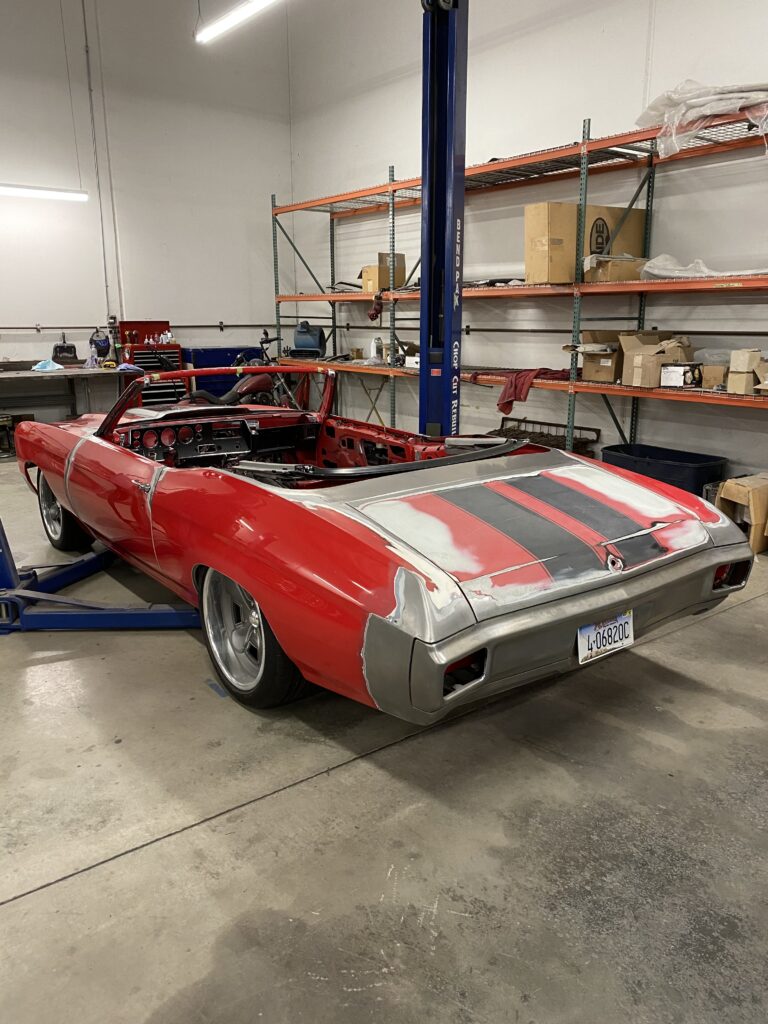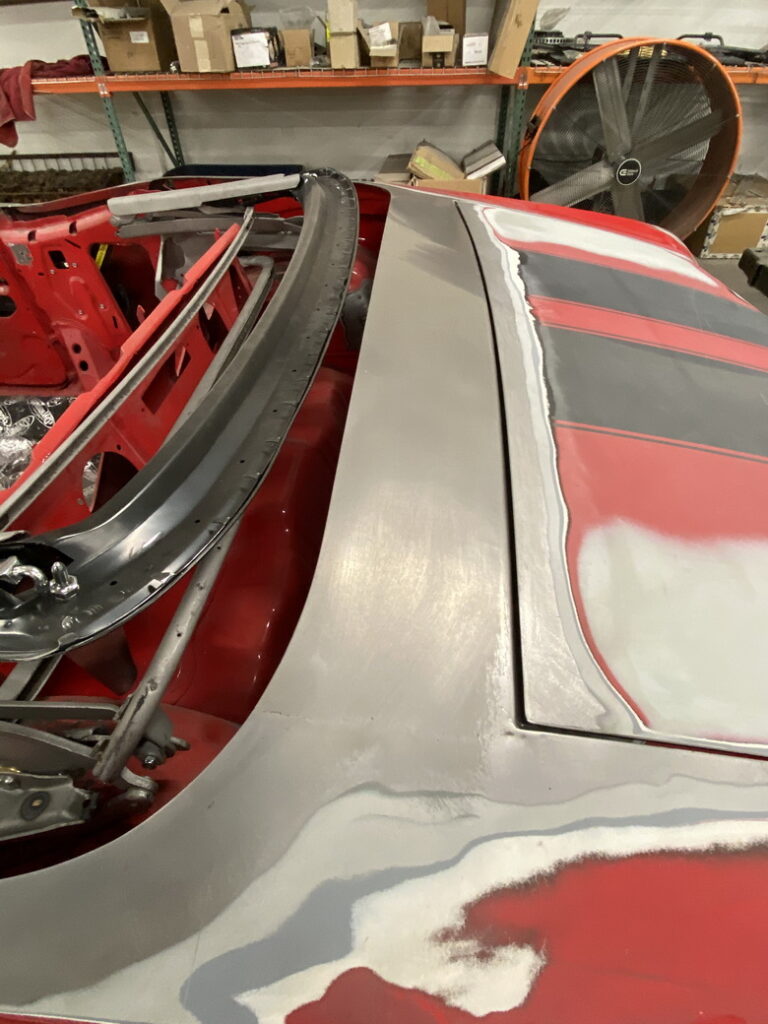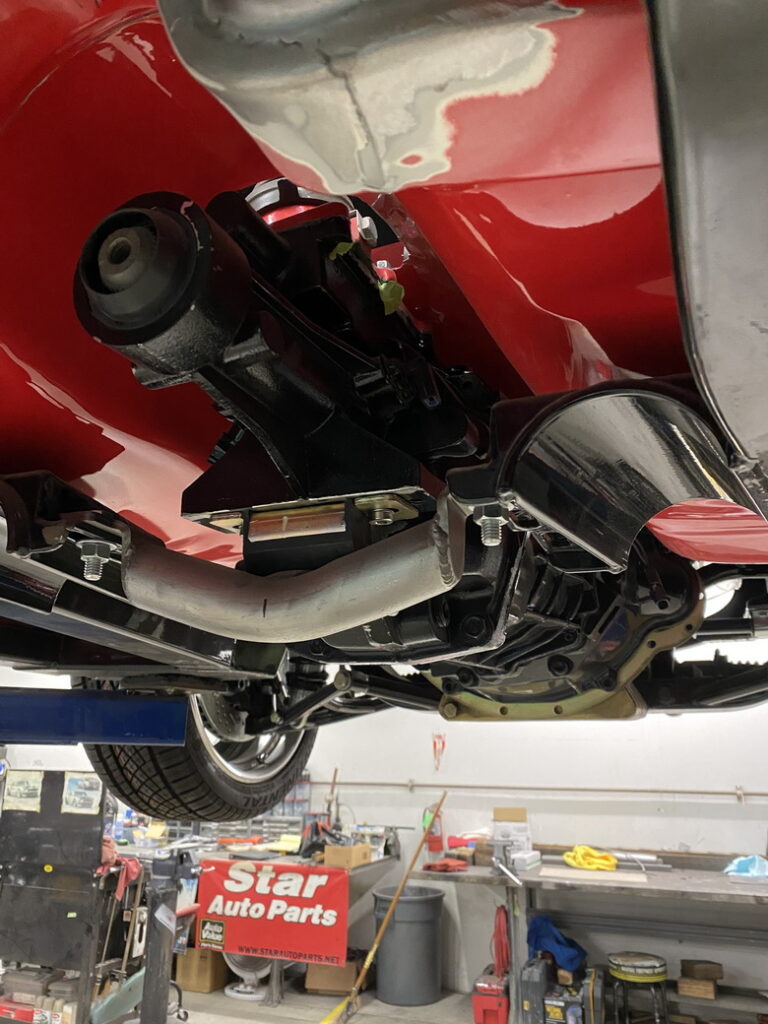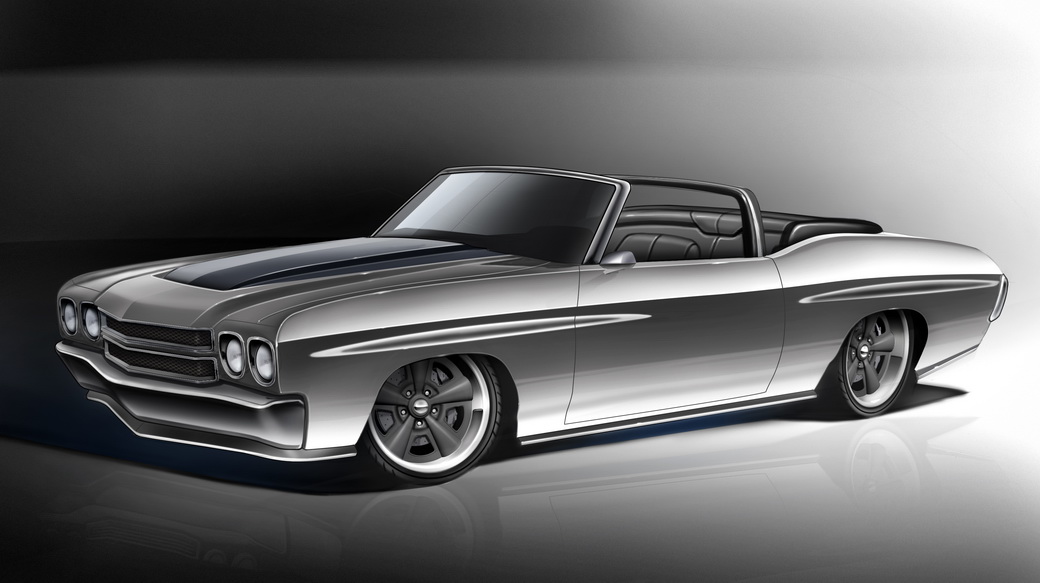Build-in-Progress stories is a new feature we have started on the TREMEC blog. These new features will show cars, trucks and other types of vehicles using TREMEC 5- and 6-speed transmissions while they are being built.
This 1970 Chevrolet Chevelle convertible is a muscle car rescue of sorts; a project that had been mothballed for a number of years. With a new owner, the car is now on-track for completion.
Did you know that 1970 Chevelle convertibles are actually rare? While the coveted SS396 and SS454 ragtops are the rarest of rare, out of 660,012 Chevelles built for the 1970 model year, only about 7,700 of them were convertibles. That works out to less than 1.5 percent of production were droptops, making them all rare.
This particular ragtop left the factory as a base 350 small-block car painted Cranberry Red with a white top. Its early life in the rust belt left it so decayed by the time restoration work started in 2011, the convertible top couldn’t be opened or the car would collapse like an empty beer can.

By 2015 the body had been repaired, painted and mated to a new Art Morrison chassis with a 572 big-block and TREMEC Magnum 6-speed. The Chevelle would stay in this uncompleted state for more than three years, until it was rescued by Sal Perez, owner of American Muscle Cars in San Bernadino, California.
At first Sal thought he would just need to do a bit of massaging and tweaking before completing the Chevelle. But several of the panel gaps were outside the acceptable tolerance, and to get them right it would require breaking into the car’s new red paintjob. So it was decided to strip the car down to bare metal again and get the panel gaps right via alignment or adding metal.

“As we gapped the panels, I decided to remove the convertible top pinch weld molding and metal work the rear filler panel and top of the quarter panels smooth,” explains Sal “To keep up with that trend we removed the hood rear pinch weld molding as well as on the top of the fenders and made those areas smooth also.”
The ride height and tire/wheel package didn’t fit the new design plan for the car, so wheel designer Chris Coddington was tasked with creating a set of customer rollers that would look perfect for the Chevelle. The new tire wheel package was fitted, but revealed the rear quarters hadn’t been installed correctly;their welds were broken and the panels reset properly.
Afterwards they eliminated the mounting bolts from the front face of the rear bumper and welded in studs on the back side. The bumper was tucked into the body tight and the deck lid lip and quarter panels extended to tighten the gap at the top of the rear bumper. A one-off rear lower valence was created by the team at American Muscle Cars to give the back end further custom shaping.

Because Sal wanted a lower, more aggressive stance and ride height the transmission tunnel had to be enlarged. The plan was to install a factory bench seat instead of buckets (also part of the original build plan).A factory Muncie floor shifter was set up to interface and shift the gears of the car’s Magnum 6-speed. As the body work kept moving forward, the decision was made to metal work the inner fenders and give them a fuller look to fill up the engine bay.
“The remaining custom work remaining is to re-work the front bumper, headlight area and grill, build a custom hood, and probably more if we’re inspired to do so. Currently, work on the car is at a slow trickle due to the shortage of personnel because of the COVID-19 virus. Once the Chevelle is finished, future plans are to hit some high-end car shows and show prospective customers what we are capable of building.”

